#Like the amount of Brian rot is insane
Explore tagged Tumblr posts
Text



Cuphead ocs and ragdoll ocs are invading my brain help🥲 anyways this is Anny she is a ragdoll and a Cuphead ocs Because YEAH I AM HAVING BRAIN ROT
#cuphead show#cuphead ocs#cuphead original character#ragdoll#Cuphead#I have like been having so much brain rot#Like the amount of Brian rot is insane#so silly#I’m getting a bit to silly because I now have to many ocs#Or just stories and lore ideas like AAAAAAA#I fr need to stop before I over load on ocs and start to forget some#Or forget they even existed 😭
14 notes
·
View notes
Text
“ When you look at everything that makes up Revenge of the Sith, the scope of vision along with the degree of artistic nuance and juxtaposition is breathtaking.
There’s lots of action, yes, as you’d expect; but the action, like so much of what Lucas was doing by this stage, is almost transcendent. ... The special effects aren’t just good, they’re actually often beautiful in a way that most special effects don’t aspire to be. The level of detail and artistry in the visuals mean you could turn the sound off and still be captivated. Some of the backdrops could make extraordinary paintings that could hang convincingly in art galleries. And Lucas is the absolute master of the establishing shot and the scene transition, turning it into an art every bit as nuanced as in a piece of music.
For that matter, the music is extraordinary....it becomes clear that Lucas and Williams had a collaborative process that really influenced how these films were scored [...]. Lucas himself said that the music was 50 percent of what mattered in these films and that is certainly evident.
Much of it, particularly the climatic Kenobi/Skywalker duel and that final act with the birth of the twins, death of Padme and creation of Vader, almost isn’t cinema at all—but opera. This could’ve been something Wagner was composing if he had ever existed in the cinema age.
In fact, the final few scenes of the film don’t even have any dialogue, but are purely musical and visual. Even some of the most stirring parts earlier on in the film are without dialogue; take, for example, the breathtakingly beautiful sequence of Anakin and Padme trying to silently sense for each other across the exquisite, sunset cityscape—it’s all visual, tone and subtle music, pure emotion with no dialogue. A scene like that could almost be part of a silent movie; and it’s also like an impressionist painting in motion.
Even that Kenobi/Skywalker duel itself is more than just an action sequence. With Williams’ epic, stirring, choral score, it too is opera. But it’s opera married to performance art: the level of intricacy, fluency and speed of Ewan McGregor and Hayden Christensen’s dueling is insane, having required an immense amount of prep and practise. The choreography takes it onto the level of dance; of true performance art as opposed to disposable cartoon violence or cheap blockbuster action.
Everything here—to the last detail—is choreographed like a ballet and it is spellbinding.
Yet while other filmmakers would try to sell an entire movie on such an exquisite centerpiece, for Lucas all of this—all of this poetry, opera, dance, music, visual art and everything else—is ultimately mere constituent part to a greater whole: a Shakespearan epic of a tortured fall from grace and a Greek tragedy...wrapped within an even larger epic about the fall of a Republic, the fallibility of religion and the genius of the Devil and failure of the angels.
[...] What Lucas created in fact was the ultimate expression/culmination of the art of the epic itself—fittingly enough, in order to conclude the defining epic of our modern times (what Brian Blessed once described as the Shakespeare of our age). ... Various observers, including academics, have noted the obvious fact that Lucas’s story is also a retelling of the fall of the Roman Republic and birth of the Roman Empire. Lucas himself admitted this, pointing to how Revenge of the Sith in particular is partly a story about democracies become dictatorships and citing the historical stories of Caesar and Augustus. You can quite easily watch the prequel trilogy alongside I, Claudius or something like HBO’s brilliant Rome series.
But none of those references or allusions are the important part. Even the fact that the prequel trilogy—and again, ROTS in particular—is quite clearly in part a story about false-flag wars, banking conspiracies, the corporate and military-industrial complex, the Bush administration and the Iraq War, etc—isn’t particularly relevant to the issue of why it’s such an epic work of significance.
[...] Lucas is the author and architect of our preeminent modern mythology—as interviewer Bill Moyers asserted during his fascinating and revealing 1999 interview with Lucas (for the release of The Phantom Menace). Partly inspired by his friend Joseph Campbell’s thoughts on mythology, but moreover informed by his own careful distillation of elements from various cultures and civilisations (what he has referred to as our collective human ‘archaeological psychology’), Lucas is every bit as influential as Virgil, Homer or Shakespeare were in their respective times, and has crafted out the ultimate mythological saga.
Revenge of the Sith is the final, completing piece of that saga—the piece that gives the saga its full scope and true soul, and the piece that makes every one of the other films count for so much more. ”
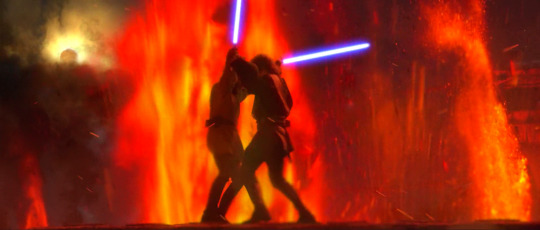
‘Revenge of the Sith may be the greatest work of art in our lifetimes...’
(an excerpt from a long-deleted blog post, archived here)
“Revenge of the Sith is still (and probably always will be) the greatest thing that will ever come out of the Star Wars franchise. I always go further, in fact, and say that it’s the greatest thing that will ever come out of big-budget, action/fantasy cinema at all. George Lucas’s final contribution to his Star Wars legacy—2005’s final prequel offering—was not only an artistic, cinematic and operatic masterpiece, but it was the ultimate, consummate manifestation of everything Star Wars was capable of being and, for that matter, everything that big-scale cinema is capable of being.
It literally does not—and probably can’t—get better than this ever again.
Lucas, who himself pretty much set the standard and invented the genre in 1977, had now taken us to the absolute zenith of what that genre of film-making could produce.
Epic, ambitious, stunning, moving, nuanced, and everything else, it was the glorious completion of Lucas’s original Star Wars saga that I had been waiting for—and something for which I will always be immensely grateful George Lucas came back to film-making to give us. I have already made the case at length for why Revenge of the Sith was an absolute masterpiece of staggering proportions, so I’ll refrain from re-stating here all the ... reasons I eternally bow at the altar of that film and its unfairly maligned architect.
People who didn’t get it or still don’t get it probably never will get it.
I’ve given up arguing with those on the tedious backlash bandwagon, those who join in with the Lucas-bashing for the sake of YouTube channel views, or those who, like [spoilt children] throwing a tantrum, bitterly disavow George Lucas and whine about how the prequels ‘ruined Star Wars’.
Someone who did get it, however, was the noted author and social critic Camille Paglia: she of course famously declared a few years ago that George Lucas was the greatest artist of his time and specifically that Revenge of the Sith was the greatest work of art in the last thirty years.
The respected, if often controversial, academic Paglia didn’t argue that Episode III was merely the best movie of the last thirty years… but the best work of art in any genre and in any medium.
[...] Predictably a lot of people either assumed Paglia was being sarcastic or they simply pooh-poohed her conclusions. Paglia, however, was not trying to be ironic, and she has reaffirmed and defended her position over and over again and with a passion—Lucas’s final Star Wars film, she maintained, is the greatest work of art in the last three decades.
[...] I cannot think of any film in any genre that has been as absorbing or as immaculate (or as ambitious). Even just conceptually, what Lucas tried to do with the prequel trilogy was staggering and is without any parallel. And while we could argue that the execution was off-the-mark in certain places, the sheer visceral power and broad artistic value of what he did manage to create—even with its various failings—puts Lucas’s saga (and ROTS in particular) into a different stratosphere entirely.
In her own view of it, Paglia especially focuses on the final act of the third prequel—the climactic finale centering on the extended Anakin/Kenobi lightsaber duel against the dramatic lava backdrop and the extraordinarily powerful way that the birth of the Skywalker twins is juxtaposed with the ‘death’ of Anakin and ‘birth’ of Vader. That latter sequence, by the way, in which the death of the mother coincides (and even feeds into) the birth of the ‘dark father’, all of it underscored by John Williams haunting, gothic choral/hymn composition, is just one example (among many) of Lucas’s extraordinarily acute and nuanced levels of vision.
‘The long finale of Revenge of the Sith has more inherent artistic value, emotional power, and global impact than anything by the artists you name,’ she said in this interview with Vice. ‘It’s because the art world has flat-lined and become an echo chamber of received opinion and toxic over-praise. It’s like the emperor’s new clothes—people are too intimidated to admit what they secretly think or what they might think with their blinders off.’
youtube
Speaking to FanGirlBlog, Paglia continued her celebration of Lucas’s final masterwork, saying, ‘I have been saying to interviewers and onstage, "The finale of Revenge of the Sith is the most ambitious, significant, and emotionally compelling work of art produced in the last 30 years in any genre—including literature".
Paglia’s assertions flowed from her 2012 book Glittering Images: A Journey Through Art from Egypt to Star Wars, which in part addressed the problem of modern cultural ignorance and the author’s worries that 21st century Americans are overexposed to visual stimulation by the “all-pervasive mass media” and must fight to keep their capacity for contemplation.
In the book, Paglia discusses twenty-nine examples of visual artwork, beginning with the ancient Egyptian funerary images of Queen Nefertari, and then progressing through various artistic works, including creations from Ancient Greece to Byzantine art and Donatello’s ‘Mary Magdalene’.
She explained, ‘Lucas was not part of my original plan for Glittering Images, which has 29 chapters crossing 3000 years. My goal was to write a very clear and concise handbook to the history of artistic styles from antiquity to the present. When I looked around for strong examples of contemporary art to end the book with, however, I got very frustrated. There is a lot of good art being made, but I found it overall pretty underwhelming. When I would happen on the finale of Revenge of the Sith, I just sat there stunned. It grew and grew on me, and I became obsessed with it. I was amazed at how much is in there—themes of love and hate, politics, industry, technology, and apocalyptic nature, combined with the dance theater of that duel on the lava river and then the parallel, agonizing death/births. It’s absolutely tremendous.’
Paglia also entirely recognised the sheer scale of Lucas’s creation and the value of even its various constituent parts as important or worthy works of art. ‘The fantastically complex model of the Mustafar landscape made for the production of Revenge of the Sith should be honored as an important work of contemporary installation art,’ she argued. ‘And also that Lucas’ spectacular air battles, like the one over Coruscant that opens Sith, are sophisticated works of kinetic art in the tradition of important artists like Marcel Duchamp and Alexander Calder. No one has ever written about George Lucas in this way—integrating him with the entire fine arts tradition.’
The problem is that Lucas and the prequel trilogy have become so widely misrepresented as ‘bad’ that most people don’t know how to deal with someone like Paglia sincerely proclaiming “Nothing in the last 30 years has been produced—in any of the arts—that is as significant or as emotionally compelling as Revenge of the Sith…”
[...] In fact, contrary to widespread misconceptions about how the Star Wars films are viewed, a Rotten Tomatoes poll ... found that Revenge of the Sith (and not Empire Strikes Back) scored as the best-regarded of the [Lucas] movies according to aggregation of archived reviews. So the idea that everyone dismisses the prequels seems like a misconception; but it is fair to say that a substantial body of people —including a lot of people who, rather incongruously, regard themselves as Star Wars fans—do completely dismiss this film along with its two predecessors.
As I said at the start, people who didn’t get it or still don’t get it probably never will get it.
But what has always struck me as pitiful about the whiny ‘Lucas Ruined Star Wars’ attitude is that it seems to flow from the premise that Lucas—a man whose stubborn commitment to his own singular vision gave an entire generation from the late 70s and early 80s unparalleled joy—somehow ‘owes it’ to those same people to do things precisely how *they* deem acceptable. That’s essentially what it comes down to—that he, as the artist, should make the art that the fans or the public want and not follow his own creative vision.
What people don’t realise, however, is that if he had done that from the beginning, there never would’ve BEEN an original Star Wars trilogy at all—and arguably all of these huge blockbuster SF/fantasy films that people spend their money seeing today wouldn’t exist either. What a lot of people also don’t realise is that Lucas was never setting himself up to be a populist or even mainstream filmmaker. On the contrary, he was the avant-garde film geek, the rogue, the outsider. The fact that Star Wars spiraled into a billion-dollar behemoth was an accident; and when the first Star Wars movie was released in 1977, it was an oddity that no one in the film industry understood or believed in.
But Lucas had stuck to his own creative vision—a vision that was largely incomprehensible to everyone else at the time the film was being made—and his singular vision hit the mark big-time and accomplished something unprecedented.
By the time of the endlessly-maligned The Phantom Menace in 1999 and everything that followed, Lucas was still doing exactly the same thing—following his own vision, trying to create something extraordinary and largely ignoring contemporary trends or opinion. The only difference was that the vast fan-base he had acquired from the original films were older now, far more jaded and over-saturated with blockbuster movies (most of which were influenced by Lucas’s pioneering work in the 70s) and they essentially didn’t *want* something new, creative or challenging—they just wanted the same thing they’d had when they were kids.
In effect, they weren’t interested in Lucas the artist or Lucas the pioneer—they only wanted Lucas the Popcorn Movie dispenser. But Lucas the Popcorn Movie Dispenser had never existed—he was simply an illusion created by the extraordinary commercial success of the Star Wars Trilogy.
What Lucas had in fact envisioned—and created—with the prequel trilogy, especially Revenge of the Sith, was something that transcended the whole summer blockbuster ennui, transcended genre, transcended the very medium of film itself, and could be discussed in the same breath as Shakespeare, Virgil and the Aeneid, Julius Caesar, and a number of equally fascinating and endlessly debatable works of serious and complex gravity.
But there was an audience of millions who were instead looking for something that could be discussed alongside Jurassic Park or Terminator 2. Which is fine—Star Wars of course can also be discussed just as validly in that latter context too; but it also exists in a stratosphere beyond it. And because Lucas’s process and vision was in that higher stratosphere a lot of the time, there was a frequent disconnect that occurred, whereby a lot of people were unable to meet him halfway or relate to the films on those kinds of levels.
But Lucas pushed on with his long-envisioned trilogy; and by the time the final installment of his Star Wars saga arrived in 2005, a sizeable proportion of the old fan-base had either departed or were by now just coming to the party for the thrill of seeing Darth Vader one last time. Some dismissed the film the same way as they’d dismissed its two predecessors, some were full of scathing mockery, while others were ambivalent. Some were suitably entertained, but didn’t take it much further than that.
Another group, a smaller minority—myself included—had just seen something of epic, overwhelming proportions and had the greatest cinematic experience of their lives.
But great art is like that.
Great works of art divides people, provoking endless debate [...] An argument could be made that the greatest artist will go all-out to create something special and substantive, even if it won’t appeal to everyone. Said artist would follow his own creative vision and not compromise it to the committee of consensus or demand.
Lucas, it should be borne in mind, never made ANY of the Star Wars films with film-critics in mind—even the Original Trilogy movies were not critically approved, despite becoming cultural landmarks. And interestingly, the hang-ups of many of those who were scathing about the prequel movies—ROTS included—were virtually identical to the hang-ups of the critics in the early 80s who either just didn’t get those original Star Wars films or were unwilling to praise a rogue filmmaker who was rebelling against Hollywood at the time and who was making something entirely out-of-step with contemporary trends and sensibilities.
Fittingly enough, the Lucas who was out-of-step with the sensibilities of the time during the late 70s and early 80s is the same Lucas who was equally out-of-step with sensibilities and trends at the time of the prequels too. In both eras, Lucas rebelled against the sensibilities of contemporary cinema and carved out his own piece of utter magic according to his own stubborn vision—the difference is that so many of the same people who adored what he had done in the first instance couldn’t understand what he was doing in the second instance.
Even though what he was doing was essentially the same thing.
For that matter, I always suspected that one of the main reasons so many people failed to appreciate (or in a lot of cases, to even understand) this film is precisely because it isn’t contemporary. That’s a key thing to understand about the Star Wars prequels—they were not made in a contemporary style.
Lucas doesn’t make contemporary cinema. Both of Lucas’s Star Wars trilogies are written and designed specifically to NOT be contemporary, but to have a more timeless quality, steeped in traditions from the past.
Lucas, you have to remember, has never been a contemporary or generic filmmaker, but a more avant-garde artist and experimenter who foremost specialises in tone and impressionism. The fact that he invented modern blockbuster cinema is purely an accident. As he himself once said, “None of the films I’ve done was designed for a mass audience, except for ‘Indiana Jones.’ Nobody in their right mind thought ‘American Graffiti’ or ‘Star Wars’ would work”.
[...] They were not contemporary or generic at all—consequently, a lot of people didn’t understand or relate to what they were watching: because they couldn’t find a point of comparison in popular culture.
To really understand these films, you have to go back to some of the historical epics of the fifties and sixties, particularly films like Ben-Hur, Cleopatra or Spartacus. If you watch any of those films (and all three are timeless, truly marvelous cinematic works) and then watch the three Star Wars prequels, it will suddenly make much more sense. The acting style, the dialogue style, the themes, the epic scope and settings, the vast mythologizing, the way the films are scored, even the intricate costume design—all of it.
There’s nothing surprising about that. After all, it’s easy to overlook the fact now from our current vantage-point, but the original Star Wars trilogy movies weren’t contemporary in style either—they were stylistically based on things like Kurosawa, Flash Gordon and the Saturday matinee serials of the 1930s and 40s. The original trilogy films made no stylistic sense in terms of contemporary cinema or sensibilities in the late 70s or early 80s—they were, in style, a homage to a long-gone era.
So too were the prequels—just a different homage to a different era.
[...]
When you look at everything that makes up Revenge of the Sith, the scope of vision along with the degree of artistic nuance and juxtaposition is breathtaking.
There’s lots of action, yes, as you’d expect; but the action, like so much of what Lucas was doing by this stage, is almost transcendent. Sure, the acting or delivery is off in a few places; mostly due to some of the actors having to perform in non-existent CG environments—remember Lucasfilm and ILM were breaking new ground technologically in these movies, which we take for granted now with all our CG and digital filmmaking, but which at the time were bound to cause some teething problems. But Ewan McGregor is superb in this film, while the maligned Hayden Christensen....in fact does a solid job in any number of key scenes.
And there’s everything else. The special effects aren’t just good, they’re actually often beautiful in a way that most special effects don’t aspire to be. The level of detail and artistry in the visuals mean you could turn the sound off and still be captivated. Some of the backdrops could make extraordinary paintings that could hang convincingly in art galleries. And Lucas is the absolute master of the establishing shot and the scene transition, turning it into an art every bit as nuanced as in a piece of music.
For that matter, the music is extraordinary—and actually if you look at how underwhelming or non-existent the music is in the post-Lucas ‘The Force Awakens’, it becomes clear that Lucas and Williams had a collaborative process that really influenced how these films were scored (and which is now no longer the case). Lucas himself said that the music was 50 percent of what mattered in these films and that is certainly evident.
Much of it, particularly the climatic Kenobi/Skywalker duel and that final act with the birth of the twins, death of Padme and creation of Vader, almost isn’t cinema at all—but opera. This could’ve been something Wagner was composing if he had ever existed in the cinema age.
In fact, the final few scenes of the film don’t even have any dialogue, but are purely musical and visual. Even some of the most stirring parts earlier on in the film are without dialogue; take, for example, the breathtakingly beautiful sequence of Anakin and Padme trying to silently sense for each other across the exquisite, sunset cityscape—it’s all visual, tone and subtle music, pure emotion with no dialogue. A scene like that could almost be part of a silent movie; and it’s also like an impressionist painting in motion.
Even that Kenobi/Skywalker duel itself is more than just an action sequence. With Williams’ epic, stirring, choral score, it too is opera. But it’s opera married to performance art: the level of intricacy, fluency and speed of Ewan McGregor and Hayden Christensen’s dueling is insane, having required an immense amount of prep and practise. The choreography takes it onto the level of dance; of true performance art as opposed to disposable cartoon violence or cheap blockbuster action.
Everything here—to the last detail—is choreographed like a ballet and it is spellbinding.
Yet while other filmmakers would try to sell an entire movie on such an exquisite centerpiece, for Lucas all of this—all of this poetry, opera, dance, music, visual art and everything else—is ultimately mere constituent part to a greater whole: a Shakespearan epic of a tortured fall from grace and a Greek tragedy... wrapped within an even larger epic about the fall of a Republic, the fallibility of religion and the genius of the Devil and failure of the angels.
[...] What Lucas created in fact was the ultimate expression/culmination of the art of the epic itself—fittingly enough, in order to conclude the defining epic of our modern times (what Brian Blessed once described as the Shakespeare of our age). The Shakespeare comparisons aren’t trivial. The evident Star Wars/Shakespeare resonance has even prompted things like Ian Doescher’s book William Shakespeare’s Tragedy of the Sith’s Revenge: Star Wars Part the Third—a retelling of Revenge of the Sith as if it had been written by William Shakespeare for real.
[...] Various observers, including academics, have noted the obvious fact that Lucas’s story is also a retelling of the fall of the Roman Republic and birth of the Roman Empire. Lucas himself admitted this, pointing to how Revenge of the Sith in particular is partly a story about democracies become dictatorships and citing the historical stories of Caesar and Augustus. You can quite easily watch the prequel trilogy alongside I, Claudius or something like HBO’s brilliant Rome series.
But none of those references or allusions are the important part. Even the fact that the prequel trilogy—and again, ROTS in particular—is quite clearly in part a story about false-flag wars, banking conspiracies, the corporate and military-industrial complex, the Bush administration and the Iraq War, etc—isn’t particularly relevant to the issue of why it’s such an epic work of significance.
Lucas is the author and architect of our preeminent modern mythology—as interviewer Bill Moyers asserted during his fascinating and revealing 1999 interview with Lucas (for the release of The Phantom Menace). Partly inspired by his friend Joseph Campbell’s thoughts on mythology, but moreover informed by his own careful distillation of elements from various cultures and civilisations (what he has referred to as our collective human ‘archaeological psychology’), Lucas is every bit as influential as Virgil, Homer or Shakespeare were in their respective times, and has crafted out the ultimate mythological saga.
Revenge of the Sith is the final, completing piece of that saga—the piece that gives the saga its full scope and true soul, and the piece that makes every one of the other films count for so much more.
And it does it so well—with such vivid and breathtaking quality—that, even having written an article as long as this one now is (and another before this), I still don’t feel like I’m adequately able to explain its full brilliance.
Neither could Lucas himself, I suspect. I’m not sure Lucas even realised how masterful it was; but, as Paglia and others note, the guy is so mild-mannered and self-deprecating that it simply wasn’t in his nature to boast about his own work. Instead he just took in all the abuse and mockery with mild bemusement, shrugged his shoulders and walked off into the twin sunset, knowing that with Revenge of the Sith he had finished what he’d come back to do.
In fact, what Lucas did was so extraordinary, so complex and so nuanced that it may take another decade or two for people to even appreciate it properly—assuming they ever do. As film experts like Mike Klimo have noted, some of what Lucas did in ROTS and the prequels may have been so sophisticated that he deliberately didn’t talk about it, but just left it there, not knowing that anyone would ever even notice.
This, as I said earlier, goes beyond cinema, and possibly even beyond Star Wars itself. Lucas genuinely outdid himself, and it is unlikely anyone will reach that height again—firstly because no one is going to be in the position Lucas was in again in terms of total ownership of a property, and secondly because no one is going to have that kind of ambition again, especially having seen how much of a backlash Lucas received from the legions of popcorn munchers, YouTube profiteers and ungrateful fans who were really looking for something much more in keeping with a generic, formulaic, standardized blockbuster formula.”
#pro Lucas saga#the prequels#revenge of the Sith#the complete saga#the Skywalker saga#the real Skywalker saga#Lucas’ saga as created myth#mythopoeia#mythopoeisis#Star Wars as myth
31 notes
·
View notes
Photo

For the week of 26 November 2018
Quick Bits:
Action Comics #1005 gives us a reappearance of The Question and a HERO Dial--possibly counterfeit, possibly just doesn’t work for villains--amidst an advancement of the underground mob arc, a surprising “conclusion” to the arson case, and a revelation of who the Red Cloud is. Although there are many spinning plates, and a decided lack of conclusion to most of the arcs, I actually quite like how Brian Michael Bendis is crafting this story. You could argue that it’s decompressed, but it feels a bit like old school superhero soap opera, and that feel really works for Superman. It’s also aided immensely by the gorgeous artwork from Ryan Sook and Brad Anderson.
| Published by DC Comics

Amazing Spider-Man #10 concludes the “Heist” arc in a fairly impressive manner. Nick Spencer really seems to get Spider-Man, Mary Jane, and their world and is delivering some great character moments here, with great heart and humour. Humberto Ramos, Victor Olazaba, Edgar Delgado, Michele Bandini, and Erick Arciniega also do a wonderful job with the art.
| Published by Marvel
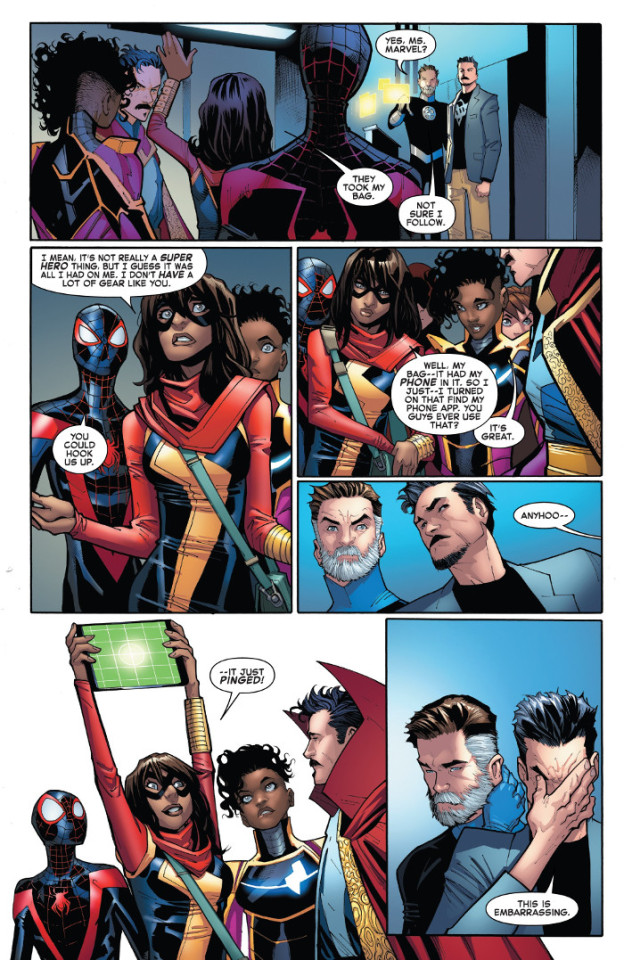
Aquaman/Justice League: Drowned Earth #1 concludes the “Drowned Earth” event in fairly epic fashion from Scott Snyder, Francis Manapul, Howard Porter, Scott Godlewski, Hi-Fi, and Tom Napolitano. While this even is definitely a vehicle to move Aquaman to his new status quo for incoming Kelly Sue DeConnick, it’s also been a great story in its own right. Building on Aquaman and Justice League mythology, while also advancing the Legion of Doom and Totality story for the main Justice League book. Also, Super-Pirate should continue as one of Superman’s looks.
| Published by DC Comics
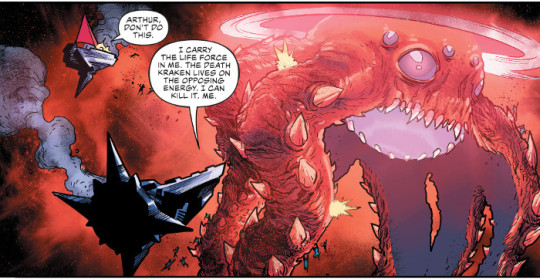
Archie 1941 #3 explores bits of basic training with Archie getting into the usually kind of hijinks that he would and the problems back on the homefront with those left behind. I really like how this series is coming together, looking at some of the basic personal fallout from the war. Also, Peter Krause and Kelly Fitzpatrick’s art remains a huge boon to this series.
| Published by Archie Comics
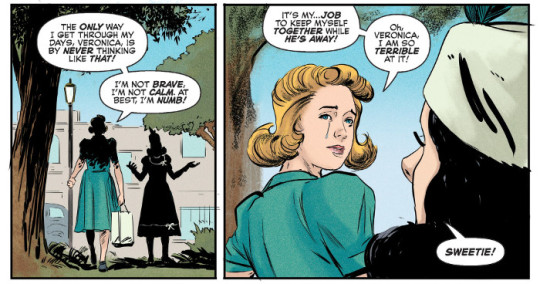
Barbarella #12 brings Mike Carey and Kenan Yarar’s run on the series to a close, with a kind of retrospective as one of Barbarella’s early antagonists attempts to exact revenge. Very nice guest piece illustrated by Jorge Fornés and Celeste Woods. This has been a fun and entertaining series, definitely feeling like some of the stranger sci-fi that you see out of Europe.
| Published by Dynamite

Batgirl #29 has some great art from Paul Pelletier, Norm Rapmund, and Jordie Bellaire for this conclusion to “The Art of the Crime”. Also some very interesting development in the status of the Dark Web and Grotesque.
| Published by DC Comics

Beyonders #4 takes a different approach to the material that the team already has, leading them to a new location wherein they hope to save the world and unravel the mystery. The light humour adds a nice touch to the otherwise dense subject matter.
| Published by AfterShock
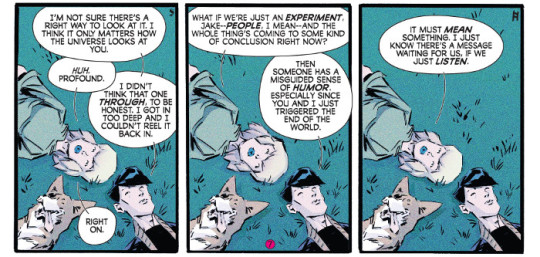
Black Panther #6 gives some much needed backstory, focusing on the Emperor, his rise to power, and his connection to the Wakandan pantheon. Very interesting implications to both where the gods went and in the Emperor being a host for a symbiote. Beautiful guest art from Jen Bartel, Paul Reinwand, and Tríona Farrell.
| Published by Marvel
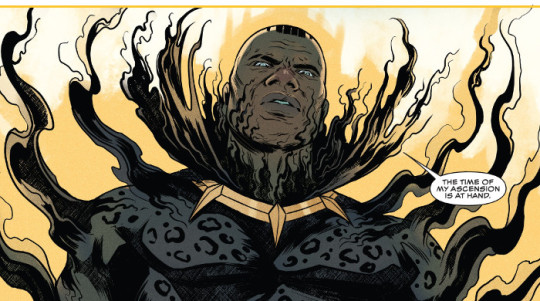
Coda #7 has some pretty big revelations as Hum & Co. confront the Pilot, and his schemes to “fix” his wife look like they’re baring fruit. Si Spurrier and Matías Bergara really are creating something epic here.
| Published by BOOM! Studios
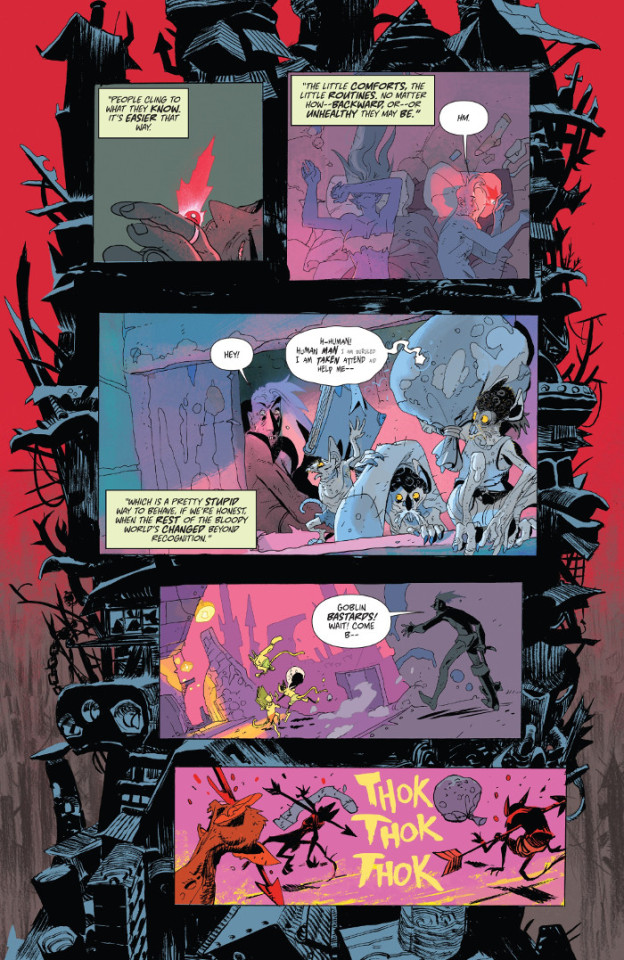
Daredevil #612 concludes “The Death of Daredevil” from Charles Soule, Phil Noto, and Clayton Cowles and with it Soule’s run on the title. It’s good, with some nice character bits and twists for this final chapter.
| Published by Marvel
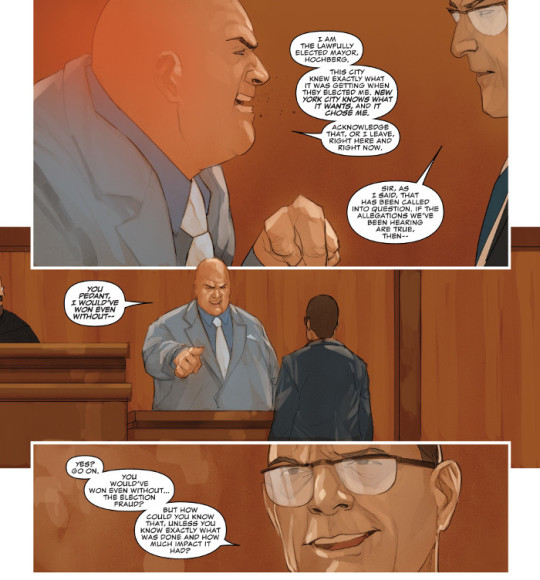
Die!Die!Die! #5 burns Bethany and Theodore as “Paul” turns on them for his side of the battling senators, even as John confronts his side alerting them to something nefarious being afoot. This is still mostly an insane action book, but at least there is something resembling an overarching plot and direction developing.
| Published by Image / Skybound
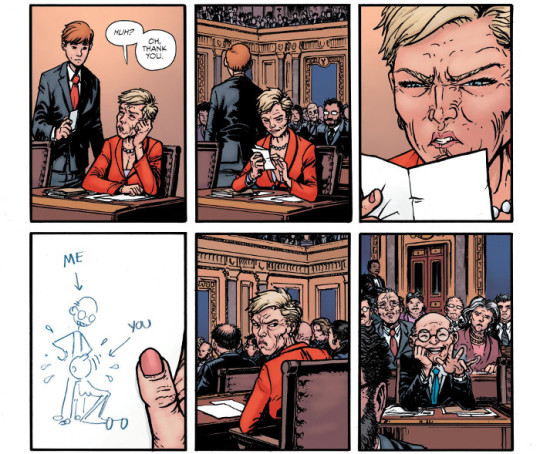
Edgar Allan Poe’s Snifter of Terror #2 gives us an entertaining and somewhat strange adaptation of Poe’s Ligeia from Rachel Pollack, Rick Geary, and Michael Garland. Also a very different take on Jules Verne from Stuart Moore, Ryan Kelly, Rico Renzi, and Rob Steen. This issue is rounded out by a poem, another prose piece, and a wonderful new Black Cat short from Hunt Emerson.
| Published by Ahoy
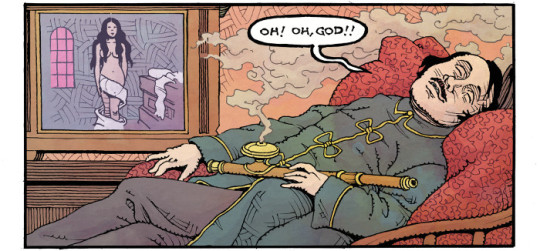
Faith: Dreamside #3 takes Doctor Mirage and Faith into the deadside where they’re searching for Monica Jim’s soul. Very interesting landscapes and characters from MJ Kim and Jordie Bellaire, capturing the oddity of what’s going on in the story.
| Published by Valiant
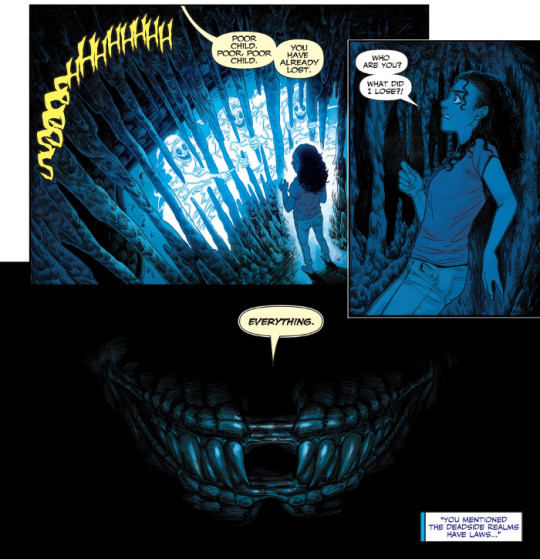
The Flash #59 continues the “Force Quest” arc with a cursory investigation of the slaughter of Gorilla City. We don’t really get any answers there, but there is a broader bit of information about the four forces as a means to protect the multiverse. Also we learn just how bloody that Gemini are willing to get. The avatar of the forces motif that Joshua Williamson is bringing in is very reminiscent of the rainbow-coloured Lanterns of Geoff Johns and of the various Parliaments (and the Red and the Rot) in Swamp Thing and Animal Man, but it’s interesting to see where he’s going with this.
| Published by DC Comics

Hellboy and the BPRD: 1956 #1 begins the next chapter in the BPRD’s history, with change definitely coming as they begin operating under the government’s purview and start having more overt bureaucracy and demands on results. You can definitely see that change in the feeling of alienation that Hellboy’s having from his friends and family as he tries to deal with the loss of his dog. Interesting decision to have different plotlines illustrated by different artists, it kind of echoes the previous breakdown of the series’ stories as discrete units, but now under one umbrella much like the changing nature of the Bureau. Great art in each too from Mike Norton, Yishan Li, and Michael Avon Oeming.
| Published by Dark Horse
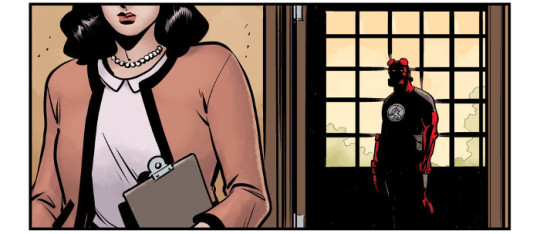
House Amok #3 starts to break the illusion, with Dylan relating how she became disillusion with the madness that her family is living. Gorgeous artwork from Shawn McManus and Lee Loughridge.
| Published by IDW / Black Crown
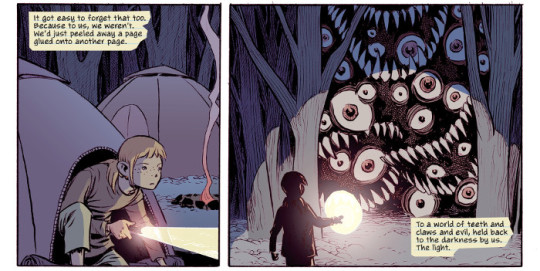
Infinity Wars: Arachknight #2 isn’t a bad conclusion to this origin story for the Spider-Man/Moon Knight mash-up character. Great art from Alé Garza, Victor Olazaba, and Ruth Redmond. Really like the design for Arachknight’s costume.
| Published by Marvel

Infinity Wars: Weapon Hex #2 finishes up one of the more balls-out insane Infinity Warps origin tales, from Bens Acker & Blacker, Gerardo Sandoval, Victor Nava, Israel Silva, and Joe Caramagna. This one has been an entertaining mash-up of X-23 with Scarlet Witch and Quicksilver that ports over a lot of the irreverence of an All-New Wolverine or X-23 tale and all the nervous energy of Honey Badger into this story.
| Published by Marvel

Ironheart #1 is off to a pretty good start from Eve L. Ewing, Kevin Libranda, Luciano Vecchio, Geoffo, Matt Milla, and Clayton Cowles, working to give a bit more personality and relatable situations for Riri Williams. There’s still the cold and awkward behaviour from Riri, but Ewing is spotlighting that she’s distancing herself and that may not be great for emotional development. Wonderful artwork from Libranda, Vecchio, Geoffo, and Milla.
| Published by Marvel

Justice League Odyssey #3 sees Philippe Briones and Jeromy Cox take over the art duties from Stjepan Sejic, It’s definitely a different style, but it still looks good.
| Published by DC Comics
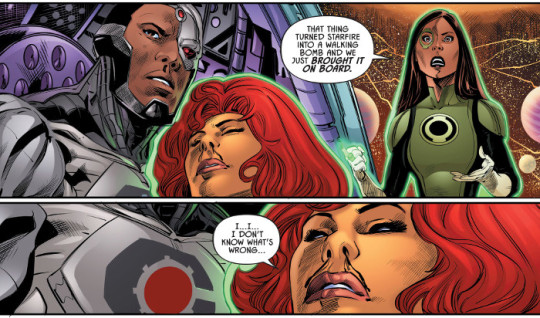
KINO #11 continues this fairly dramatic change in tone and status quo for the series from Alex Paknadel, Diego Galindo, Adam Guzowski, and Jim Campbell. It is really damn good, bringing in a fair amount of mystery and intrigue, with two Alistair Meaths running around.
| Published by Lion Forge / Catalyst Prime

Mighty Morphin Power Rangers #33 gives us a bit of Ellarien’s history as she navigated this universe tending towards entropy and found herself as its sole Ranger. I really like the new direction and mythology that Marguerite Bennett and Simone Di Meo are building.
| Published by BOOM! Studios
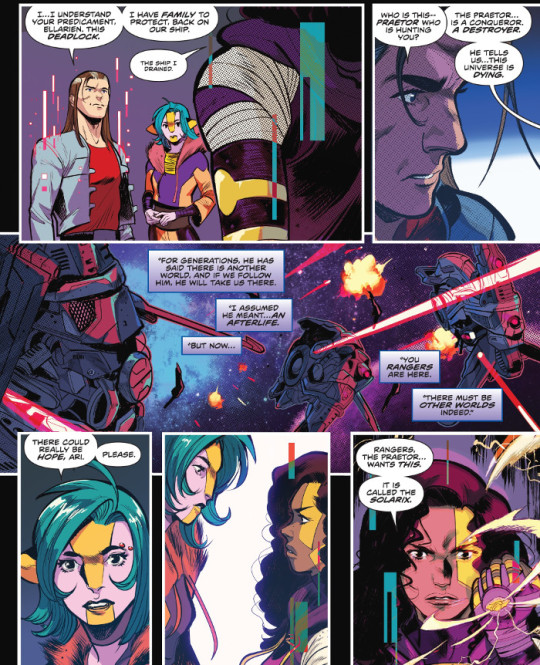
Old Lady Harley #2 introduces us to a very frightening extension of the Batman idea with Bruce plugging himself in to the Bat-computer in order to police Gotham through his Bat-robots. It’s interesting, though, how Frank Tieri can go from this grim vision of the future to the more ridiculous hilarity of Arkham Asylum as an old folks home.
| Published by DC Comics
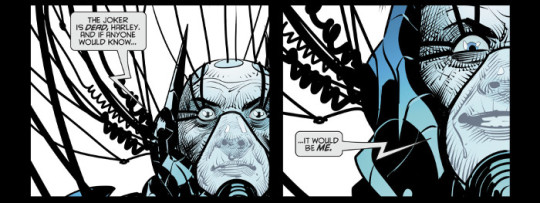
Paradise Court #5 brings the series to a close with the revelation of what’s been going on in the planned community and what its true purpose really is in dramatic fashion. This has been a good little horror thriller from Joe Brusha, Babisu Kourtis, Leonardo Paciarotti, and Taylor Esposito. If you enjoy Bentley Little or Scott Nicholson novels, you’ll probably like this.
| Published by Zenescope
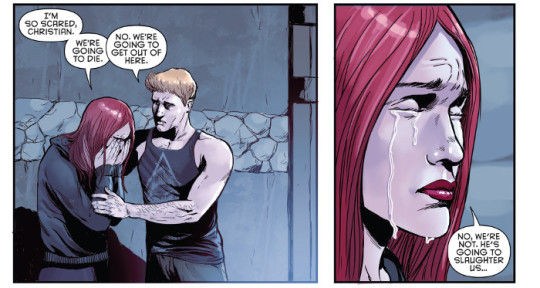
Quincredible #1 is the first Catalyst Prime series to be co-branded with the Roar imprint, Lion Forge’s teen label, (though I suppose at least Superb was also rebranded with it) and it’s a pretty good debut from Rodney Barnes, Selina Espiritu, Kelly Fitzpatrick, and Tom Napolitano. This first issue introduces us to Quin, another teen affected by the Event, who has developed what might be invulnerability. Barnes focuses the story on his community involvement in New Orleans, bringing up class and racial divides, as well as a problem Quin has with bullies, to really make the story feel rich.
| Published by Lion Forge / Roar / Catalyst Prime
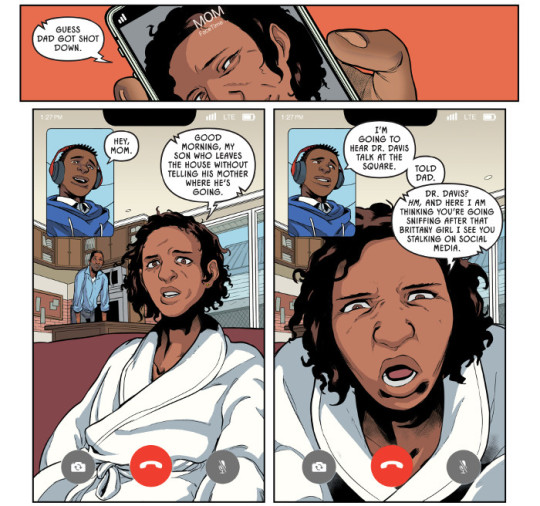
Regression #12 continues to be bleak, entertaining the very real idea that the “bad guys” are going to win. I think that’s probably one of the reasons why I like this series, not because the Valgeroti are right or worth cheering for, but because Cullen Bunn has created a compelling horror tale where the wrong thing feels like a satisfying end resolution. Also it comes with some phenomenal, beautiful, and grisly artwork from Danny Luckert and Marie Enger as they work their terror.
| Published by Image
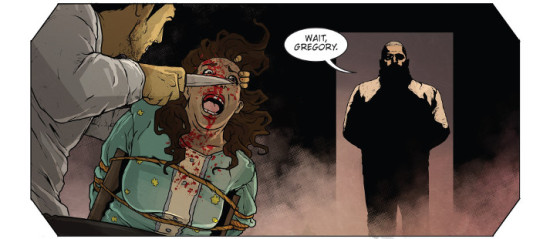
Scarlet #4 is an interesting penultimate chapter to this mini from Brian Michael Bendis, Alex Maleev, and Josh Reed. Most of it is discussion of what will happen when Scarlet surrenders and her giving her goodbyes to her friends. Really makes you wonder what’s going to happen in the finale.
| Published by DC Comics
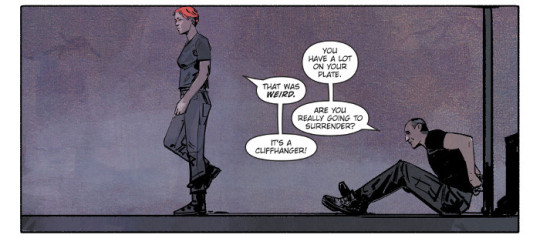
The Silencer #11 begins “Cold Cold Heart” and it feels like the title is working towards an end. I know that many of the other New Age of Heroes titles have been cancelled and are winding down, but I’ve not seen anything in that regard to this one. It could just be working its way through change. In any event, it’s pretty damn good. Seeing all of Leviathan as it exists now is fairly neat and the art from Jack Herbert, Tom Derenick, and Mike Spicer is great.
| Published by DC Comics
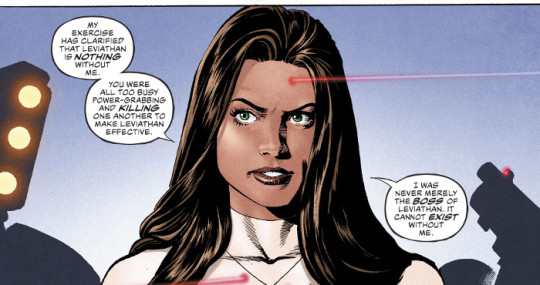
Spider-Girls #2 takes a bit of time to trade stories about Normie Osborn before going to him to warn him about the Inheritors on their world and work some magic on the scrolls of the Spider Cult. Nice character development from Jody Houser here.
| Published by Marvel
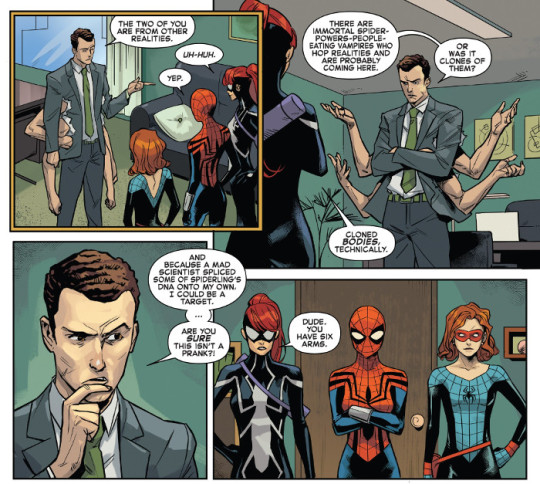
Spider-Gwen: Ghost Spider #2 explores an alternate reality where Harry Osborn was Spider-Man and Gwen became the Green Goblin. It’s an interesting emotional ride as we see what happened in this reality, beautifully illustrated by Rosi Kämpe and Ian Herring. One thing that isn’t quite clear, though, is why having our Gwen help their Peter find their Gwen because she’s necessary to help our Gwen is blackmail, though. Maybe I missed something, but it seems like the heroic thing to do.
| Published by Marvel
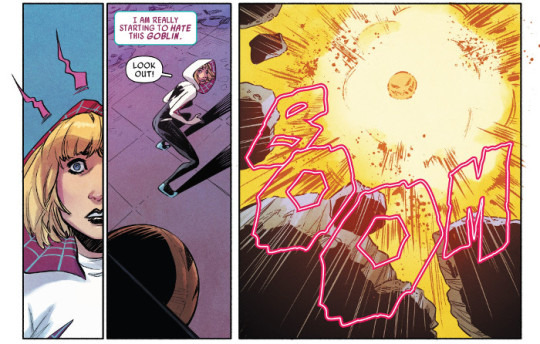
Stranger Things #3 largely works to create an atmosphere of despair and defeat as Will continually tries to reconnect with his mother, or anyone, back in the real world and fails. The artwork from Stefano Martino, Keith Champagne, and Lauren Affe perfectly convey that feeling.
| Published by Dark Horse

Strangers in Paradise XXV #8 takes a running leap into the strange. Or stranger, as Katchoo returns with the package for Jet. Terry Moore is really taking this tale into a different direction from the initial intrigue thriller plotline. Also, a nice return of Libby and Sam from Motor Girl.
| Published by Abstract Studio

Teenage Mutant Ninja Turtles #88 has quite a few “holy crap” moments as the Mutanimals aid the Turtles in repelling the EPF from Burnow Island. Huge revelations about Bishop’s history and a hero moment from Slash. Dave Wachter and Ronda Pattison deliver some incredible artwork all throughout.
| Published by IDW

Teenage Mutant Ninja Turtles Macro-Series: Leonardo #3 is one of the most beautiful Turtles books I’ve seen. The art from Sophie Campbell and Brittany Peer is gorgeous, guiding us through a fairly introspective tale of what Leonardo really wants out of life, while still advancing major plot points with the fate of the Foot Clan.
| Published by IDW
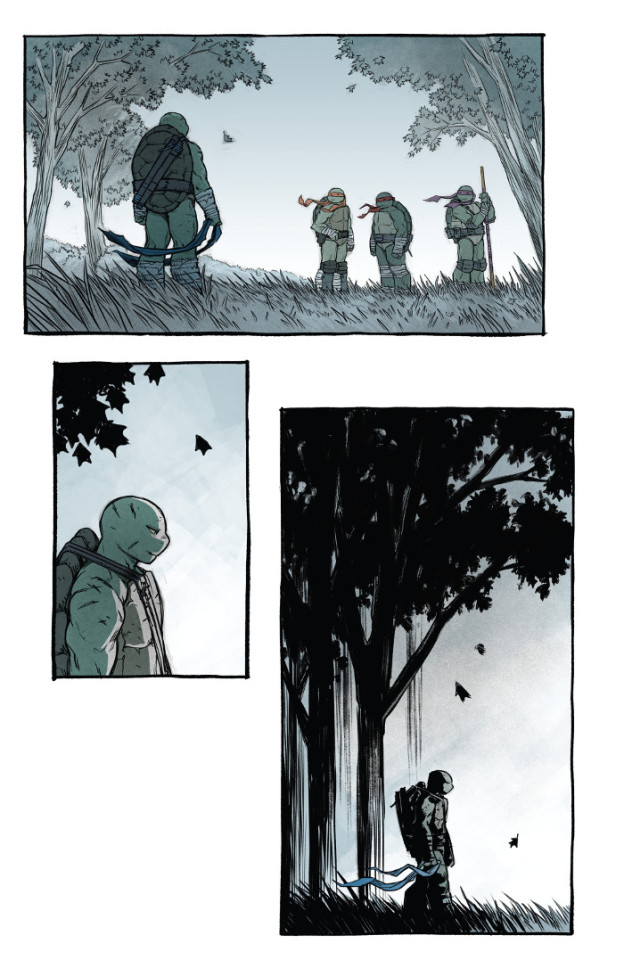
These Savage Shores #2 continues this brilliant series from Ram V, Sumit Kumar, Vittorio Astone, and Aditya Bidikar. It is a thoroughly stunning combination of horror tale, tragic romance, and political drama rolled into one absolutely beautiful package. The world is deep and enthralling, brought to life in amazing use of mostly variants on 9-panel grids from Kumar and Astone. The design sense alone makes this series interesting to read just from a technical perspective, but Ram V and Kumar put so much into the story and storytelling that it transcends just style. This is a truly great comic.
| Published by Vault

Titans #30 continues to break the team into pieces. The rebuilding, if they ever make it there, should be interesting.
| Published by DC Comics
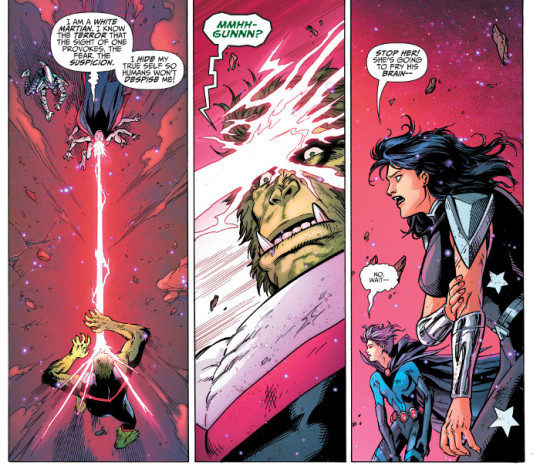
Vampirella/Dejah Thoris #3 nicely moves this along, introducing even more of the various peoples of Mars as Vampirella searches for aid for her people. Great art from Ediano Silva and Dinei Ribeiro.
| Published by Dynamite
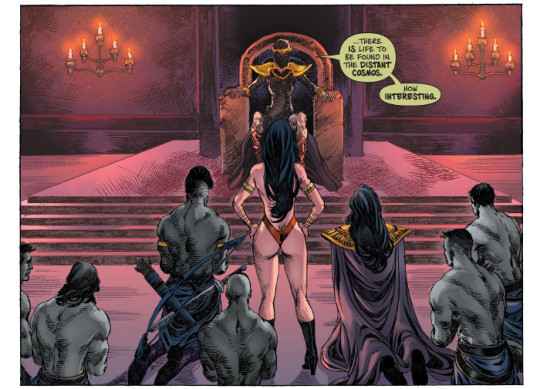
The Warning #1 is fairly decompressed, slow, methodical, but there’s still an interesting premise here of genetic manipulation of soldiers and an alien invasion. The art from Edward Laroche and Brad Simpson is very nice. Laroche has a style somewhat akin to Chris Sprouse and Jonathan Luna and it works to give this a bit of distance echoed by the existential narration.
| Published by Image

Wonder Woman #59 continues G. Willow Wilson and Cary Nord’s first arc on the series, with an interesting rebirth and reinterpretation of Ares that’s possibly deadlier than the previous one. Love the artwork from Nord, Mick Gray, and Romulo Fajardo Jr. So far this has felt a lot like Greg Rucka’s original run on the series over a decade ago, a nice mix of modern sociopolitical analogues and DC’s take on Greek mythology.
| Published by DC Comics

X-O Manowar #21 sees Juan José Ryp somehow level up his artwork. The designs, detail, and storytelling this issue are just incredible, made even more beautiful with Andrew Dalhouse’s colours. Matt Kindt, Ryp, Dalhouse, and Dave Sharpe are crafting a very interesting next chapter in what started as the Divinity saga, building upon the recent Eternity mini as Aric and co. confront David Camp in New Eden.
| Published by Valiant

Other Highlights: Atomic Empire, Books of Magic #2, Come Into Me #4, DC Nuclear Winter Special #1, Fantastic Four #4, Hex Wives #2, Invader Zim #37, Jim Henson’s Labyrinth: Under the Spell #1, Man-Eaters #3, Marvel Action: Spider-Man #1, Marvel Two-In-One #12, This Nightmare Kills Fascists, Oh S#!T It’s Kim & Kim #4, Old Man Hawkeye #11, Pandora’s Legacy, Red Sonja #23, Redneck #17, Rick & Morty #44, Sex Death Revolution #2, Spider-Man/Deadpool #42, Star Wars: Darth Vader #24
Recommended Collections: A Walk Through Hell - Volume 1, Amazing Spider-Man - Volume 1: Back to Basics, Black Hammer Library Edition - Volume 1, The Book of Ballads and Sagas, Eternity Girl, GI Joe: A Real American Hero - Volume 21, Harbinger Wars 2, The Highest House, The Mighty Thor - Volume 5: Death of the Mighty Thor, Quicksilver: No Surrender, The Realm - Volume 2, Spider-Man/Deadpool - Volume 7: My Two Dads, Summit - Volume 2: Price of Power

d. emerson eddy does not know, and has never met, those three people who have never been in his kitchen.
3 notes
·
View notes
Text
The Turning Point is Here
Photo courtesy of Google
By Brian McKay
It has been the MO of generations throughout time that the conservative factions of older generations view the younger generations with an air of contempt. New ideas are seen as suspect whereas they go against the grain of what had worked in some context previously. Surely, the next generation can’t be as smart or as motivated as the one the made the world they are coming into, right? When a younger person is essentially saying, “We are going to change this.”, it threatens the ego of those that wanted to believe the world they leave behind is the right one. Humanity has a hard time realizing that the right world has never been left behind. It’s not personal, just impossible.
Those watching social media this last week have seen frequent lament of the generations Y and Z in the old familiar terms of derision. They do the Tide Pod Challenge, wear pink vagina hats, are lazy, expect to be taken care of, behave in an entitled manner, are all snowflakes, are corrupted by violence in video games and film, turning away from God and the list goes on and on. Once again, a generation unwilling to simply look backward is making the statement that they are offended by younger people not appreciating what they have done for them. In their delusions, the older generations will even have those that espouse the ridiculous conspiracy of “crises actors” because they can’t believe these kids could be rebelling. No morons, it’s not the Deep State. It’s a long overdue social movement and you helped bring it about.
The same people that can’t recall the last time they looked in their high school year book and gasped at the amount of perms and mullets, embrace the thought, “we are the ones that did everything right”. You never did supremely stupid shit? It might be time to reflect on your life.
Some political scientists had often forecasted 2017 as a turning point. Seen through a lens of complacency, the financialization of America and a statistical trend line spanning decades of both peace and uprising, 2017 was forecast to be the start of the next period of upheaval. I had frequently written about it during 2016, before the outcome of the election was even in site. My daughter had braced herself for the music to become really good and more creative as the world moved toward greater strife and tumult.
ONE MUST WONDER IF WE HAD ANY IDEA IT WOULD GET THIS CRAZY AND THIS FAST.
America finally went off the deep end and it was evident to our kids everywhere. We were the long, slow casualty of the Cold War and the mythological America created to battle it. Many thought we had won back in 1990, but we had won a battle against others through perpetuation of myths and inappropriate stigma that would continue to rot us from the inside out. Rot eventually comes to the forefront.
No one ever wants to admit their country is failing. It’s hard to conceive that nativism, a propensity toward authoritative government and bigotry can masquerade as patriotism. No one ever saw this amount of hypocrisy in actual control of an entire country. When a teenager sees the man in the most powerful office in the world creating ridiculous tweets and behaving like someone less intelligent and mentally stable than themselves and their friends, is it any wonder they have to question things? Add in a surge in mass killings, science denial, parents toiling in low wage jobs and an environmental disaster yet to destroy their futures, and fresh eyes will see fresh ways of thinking. Pandora isn’t going back in the box.
Current generations have grown up with and openly accept the very diversity, sexual openness and move toward strong science and logic that they have watched the MAGA crowd call the “culture wars”. For our kids, there is no war there and they see no logic in why people perceive one as being fought. The parents deriding what they see as liberalism inherent in the schools, don’t realize that it isn’t inherent liberalism but the new reality in a changing society they don’t control, despite how much they may wish to.
If one doesn’t like the new political power being shown by generations Y and Z in ways no generations have since the 60’s, they might want to look at what they did to contribute to the pendulum before it swung back. No prior generations had the luxury of growing up in the time of unrivaled military power in their country and a lack of strong external threats to divert their attention and scare them. They had a chance to focus within on issues of advancement and dysfunction in a manner not conflicted by the needs of the internal propaganda necessary during a Cold War. What they see from the generations still longing for that propaganda push, has made no sense to them.
SOME OF THOSE THINGS INCLUDE:
A recession like no economic downturn since the Great Depression. They were privy to financial greed on an epic scale and saw that those hurt the most were those in the most vulnerable positions. As a result, they are privy to more economic stratification within their schools than prior generations saw as the lines between the have and have nots once had higher specific geographic demarcation.
Their friends are diverse as differences in race, ethnicity and sexual orientation don’t matter to them. That racism, extreme Christian exaltation and anti-LGBTQ rhetoric has exploded among older generations after the 2016 election, scares them. Seeing friends and family experience higher stress levels due to this, has them wondering what the hell is wrong with their elders.
They have seen the continual exponential explosion of scientific advancement and the excitement that comes with it. This exponential increase is internalized in them. To watch their elders, engage in conspiracy theories and bad logic instead of trying to understand science and technology, and to their generation’s detriment, leaves them with feelings of disdain.
The ravages of blatant consumerism are evident to them as they see people fighting on Black Friday for tv’s at WalMart. They are well aware that the people fighting over those tv’s are also using more resources than the planet can support and will leave their generation with nothing.
An explosion in debt spending world wide to keep capitalism afloat, scares them. That’s debt that will be their responsibility with few ways to pay for it except extreme austerity. At the same time, they see US military spending exploding but witness the extreme depravity of the Republican Party cutting much smaller social programs. This generation knows that it isn’t sinful to be poor as they grow up in a US of massive economic disparity and where the greatest predictor of economic success is the family one is born into. To them, the idea that anyone can be anything in America, is ridiculous.
They know a world without work is coming and we are woefully underprepared for it. Where their parents could decide what they wanted to be, young people in America have to ask, “Will there still be such a job and how long will I have it before a machine takes over?”
And lastly, the recent catalyst has been the mass shooting in Parkland, Florida. Over the last several years, our younger people have been witness to numerous mass slaughters, with four of the largest happening in the last two years. Is it any wonder that this generation hears the term “thoughts and prayers” but sees no action and wonders if their elders are just insane?
The list goes on and on and on, unfortunately. Because of what older generations are shaping to become their world, they are also reflecting it as generations unlike any before them. For the first time in American history, whole generations are eschewing things for experiences. They want smaller homes. Many don’t even bother to get driver’s licenses. The sharing economy is a thing for them. Shopping isn’t their therapy.
THESE KIDS ARE NOT THOSE OF US THAT CAME BEFORE THEM. THEY ARE THE BACKLASH TO WHAT OLDER GENERATIONS HAVE LEFT THEM.
So, before you pull the Tide Pod Challenge out of your ass on social media again, take a look at the partial list above and ask yourself, “How could I honestly expect them to want to be like everyone before them?” Ask yourself how anything we leave them to inherit should possibly instill any desire to maintain the institutions of society as they currently stand.
They aren’t like us. They won’t be. This will be a generation that exerts political and social power like none before it. We are leaving them pure crap and they don’t want it. To watch them start exerting power before all they have is nothing, is exciting.
0 notes